


|
Waylon Brinck - Technical Art Director
Back to Portfolio
I was CG Supervisor (equivalent to Technical Art Director) on Medal of Honor, released in October 2010. In the following screenshots and videos, I contributed to the following:
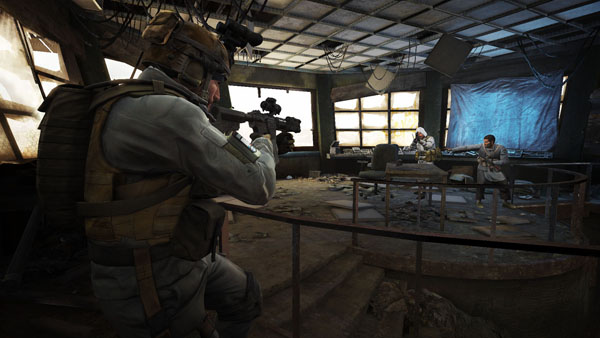
Promotional image for MOH, captured in-game Medal of Honor Launch Video. All footage is created in-game, using our custom renderer. (Only motion blur was done outside the engine) 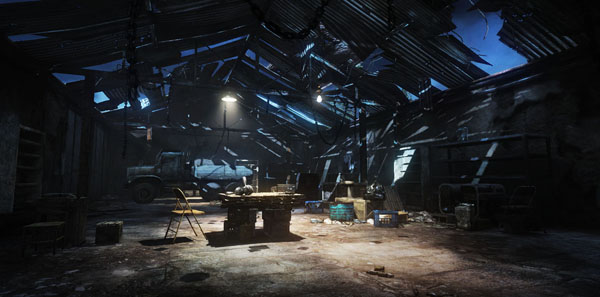
A set from the Gardez level 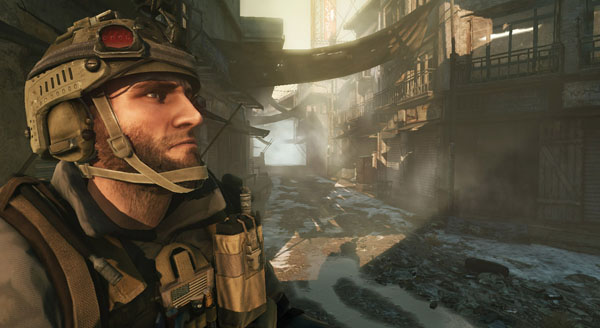
A scene from the MOH launch video, using only in-game post process
As CG Supervisor on Medal of Honor, I filled many roles. Below, you'll see some highlights from my Technical Art work.
Our first upgrade was to the lighting system. We switched to a radiosity renderer, implemented a fully-dynamic shadow casting sun light, and switched to a pre-light renderer (which allows many more dynamic lights.) 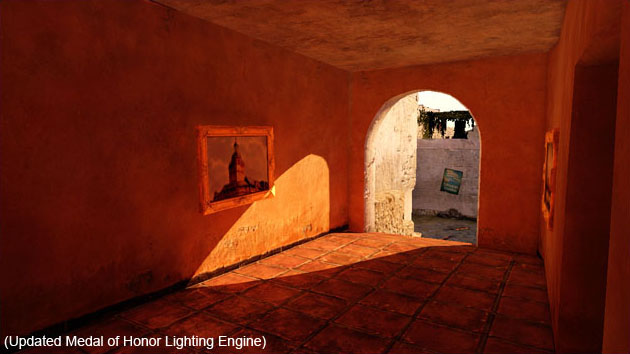
(Mouseover for a "before" shot)
We also made many improvements to the render and postprocess pipeline: Dynamic Iris, Filmic Tonemapping, Color Look-Up Table, Atmospheric Scattering, Sun-Based "God Rays" (as opposed to screen-space), and Daytime Bloom (simulates "Glare").
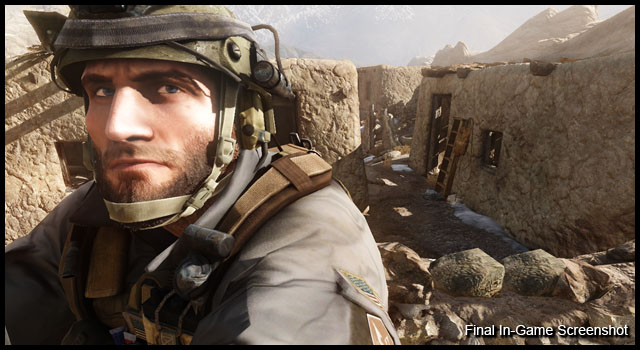
(Mouseover for a "before" shot)
Ultimately Epic added many of the same features to the core engine, but our implementations have some performance and quality advantages, and of course are better-tuned for the visual style of Medal of Honor.
A number of real-world optical devices used by the US military appeared in our game. I created many post-process effects to simulate the look of the real-world hardware.
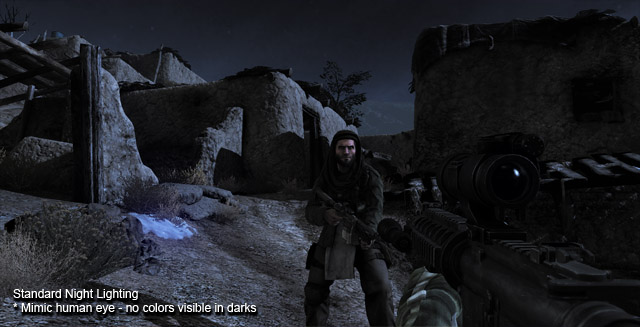
Night Optics Devices (Click image for next optics mode) 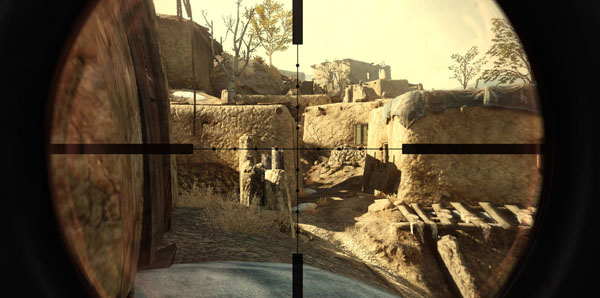
Sniper Rifle view, with distortion, blurring, scene reflection, and tinting. 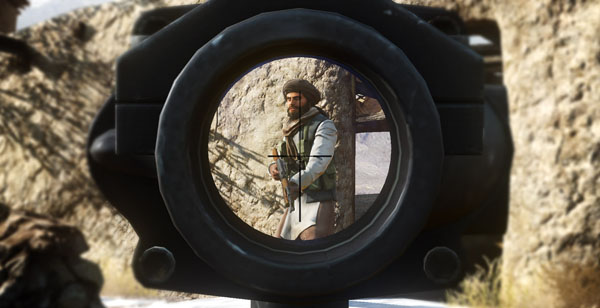
ACOG scope view, with lens reflection, and peripheral vision blurring and vignetting. 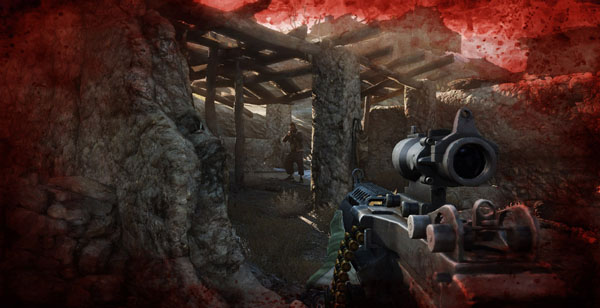
Health Indicator (tuned for performance, and based on heavy playtesting! Note the distortion effects where the blood is thick)
I also created the majority of the surface shaders in the game. (We had a very "UberShader"-heavy workflow, with lots of material instances and switches to turn on features as needed.) Here are some of the more interesting shaders I created.
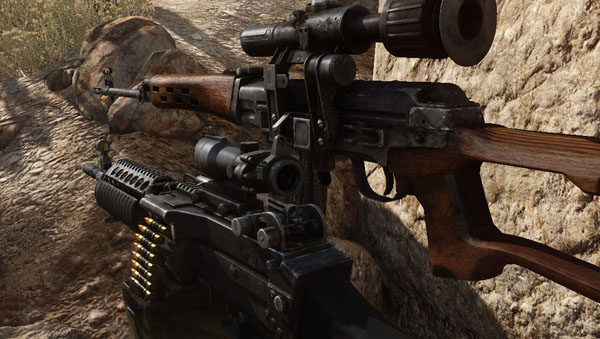
I created a versatile weapon shader that can convincingly mimic multiple surface types by reflecting the lighting and environment in a rich way. In the image above, compare the various types of metal to the rust and the wood. 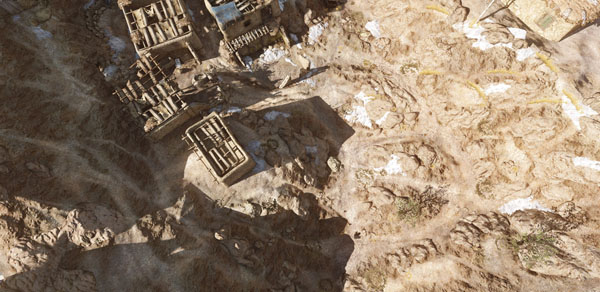
We had many natural environments, so we needed a versatile (yet efficient!) terrain shader. I created an ubershader that allowed our artists to iterate quickly, and add convincing blending detail as needed. 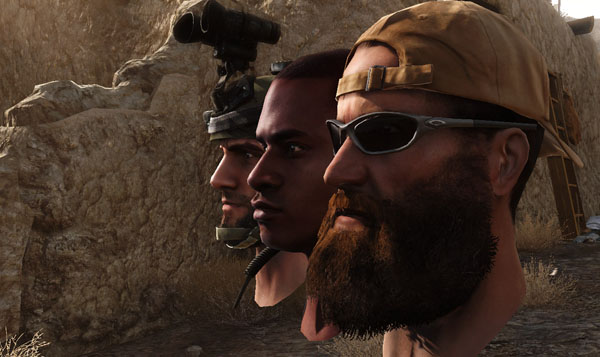
Our skin shader is versatile enough to support lots of different skin tones. But a character is more than skin - our cloth shaders have a number of edge fuzz and deep scattering effects to keep them from feeling plastic. The eyes have a complex reflection and a built-in Ambient Occlusion mask that animates when the character blinks. 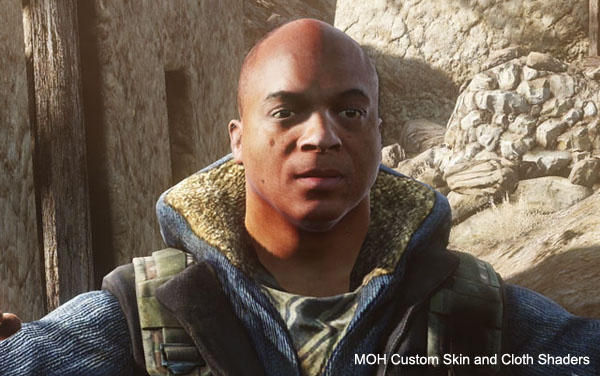
Hover your mouse over the image to compare our skin and cloth shaders against standard Phong shading. 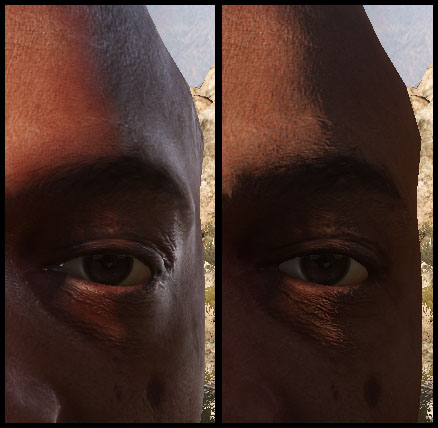
Detail on the skin shader. Note the following. 1) Environment reflection (Visible on the edge of his face) 2) Softer sunlight terminator (visible above the brow) 3) A novel Sub-Surface Scattering technique (visible along the light terminator, particularly in the wrinkles under the eye). 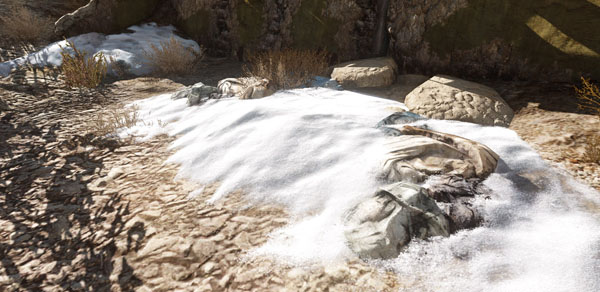
Medal of Honor had a lot of environments with melting snow. This shader, which is applied to a solid mesh, convincing blends the edge of the mesh against the ground or any other intersecting objects (like the pile of rags). The snow also includes a slight sparkle that's visible when the camera moves, and "Light Bleed" to mimic sub-surface scattering. Back to Portfolio waylonb@gmail.com | Curriculum Vitae |